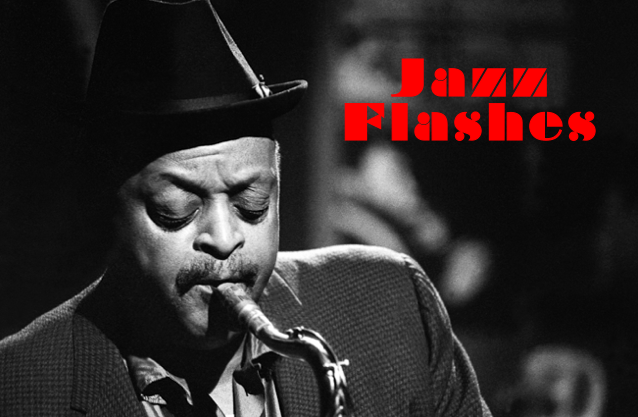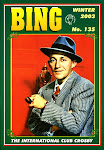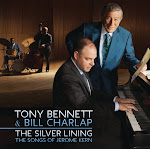
The Book: A History of Jazz in Britain
In 2005, Northway Publications brought out the second edition of Jim Godbolt’s A History of Jazz in Britain, one of the most informative and most thoroughly researched books on the jazz activity that took place in Great Britain from the early 1920s to the early 1950s. Originally published by Quartet Books in 1984, the volume is not exactly a history of jazz in Britain but rather a chronicle of the different ways in which jazz was received in the British Isles. In an effort to explore how the English public reacted to the coming of jazz, Godbolt draws heavily on contemporary newspaper articles and record reviews and features that appeared in specialized jazz periodicals such as the Melody Maker, Rhythm, Swing Music, and Hot News, noting that journalism and research on jazz were noticeably more prolific in Britain and the rest of Europe than in the United States in these early years.
Godbolt opens his book around 1919, coinciding with the pioneering visit to England of the Original Dixieland Jazz band, the first jazz orchestra to appear and record in the Old World, and brings it to a close in the early 1950s, when the British jazz scene was in the midst of a stylistic battle between the supporters of traditional, New Orleans-style jazz and the followers of modern bebop. Godbolt eloquently justifies the scope chosen for his work in the introduction:
I had two main reasons for not taking this summary beyond 1950. An attempt to embrace events from 1919 to the present day . . . was so daunting a notion that I gave it no more than a cursory thought . . . The second reason is that from 1950 the scene was so different from that of the preceding years. The big bands were to collapse; there were to be the coincident phenomena of ‘trad’ and ‘bop’ and then ‘mainstream,’ where many of the stylistic opposites came to join hands. (xii)
 The Original Dixieland Jazz Band, the first jazz band to play in Great Britain
The Original Dixieland Jazz Band, the first jazz band to play in Great BritainThe closing chapter does deal with the years after 1950, but the author consciously chooses not to delve into those events, well aware that the subject matter would deserve another full-length volume.

From the previous quotation, it becomes apparent that the history of jazz in Britain was one of opposites and stark contrasts: first of all, there was the opposition between those critics who embraced and celebrated jazz and those who openly criticized it; then there was the important distinction between the dance bands that performed sweet, commercial dance music and that only seldom featured jazz and the exclusively jazz-oriented hot combinations in the twenties and thirties; finally, when jazz had completely taken hold in Britain, there arose the heated debate between the followers of traditional jazz and those of modern bebop. Amid the excitement created by the new sound and the visits of great American stars by the likes of Louis Armstrong and Duke Ellington in the 1930s, critics attempted to establish some criteria for the evaluation and criticism of jazz performances and records. Godbolt notes that in its early years, since its inception in January 1926, the Melody Maker was “as confused and convoluted in its critical judgments about jazz as the variety journals and national newspapers” (18).

Nevertheless, criteria and some kind of critical consistency were gradually attained as more and more records by both American and British bands were released in England, in many cases with a delay of several years. Slowly, jazz began to penetrate British life, and a solid base of avid fans and record collectors was established, many of them gathering in local Rhythm Clubs to enjoy live performances and record recitals and often sharing their views on the music via newsletters and similar publications. Godbolt also devotes a whole chapter to the pioneering jazz discographers, that is, the meticulous researchers who sought to set in writing the personnels of every jazz session ever committed to wax. The author notes that the figure of the discographer is, at least in these early years, essentially European, and he praises the dedication of researchers such as Brian Rust, Ralph Venables, Albert McCarthy, and Dave Carey for their invaluable contributions to early jazz scholarship.
Of course, Godbolt devotes numerous pages to assessing the artistry of the many native British jazz combinations that sprang up inspired by the new sound coming from America: as the records by Spike Hughes, Nat Gonella, Harry Parry, and Humphrey Lyttelton clearly show, British musicians were prompt to ably assimilate the new idiom, and a series of respected sidemen emerged, including Johnny Dankworth, Buddy Featherstonhaugh, Hugo Rignold, and Vic Lewis, many of whom were at one time employed by commercial dance bands with little or no interest in jazz. Many of these British combos often employed the services of American musicians visiting the country. One of these was arranger and multi-instrumentalist Benny Carter, who was hired by Henry Hall to write the arrangements for the BBC Dance Orchestra but who was not allowed much room to indulge in jazz during his tenure with the orchestra. This flow of American musicians working in Britain would soon come to an end, though, as ongoing disputes between the British and American musicians’ unions resulted in an infamous ban preventing American jazzmen from appearing in public or recording on British soil that lasted for well over two decades. As a matter of fact, one of the most interesting–and outrageous–chapters in Godbolt’s book relates the ridiculous lengths to which some promoters had to go in post-WWII England to bend the law just enough to have jazz giants Sidney Bechet and Coleman Hawkins perform in Britain, sometimes even facing legal prosecution.
 British jazzman and pioneering critic Spike Hughes
British jazzman and pioneering critic Spike HughesWritten by someone who lived through these exciting years and who was a part of the history of British jazz as manager, promoter, and music critic, Jim Godbolt’s A History of Jazz in Britain is highly readable, extremely enlightening, and definitely an essential work for anyone interested in the reception of jazz in Europe in general, and in Great Britain in particular.

The Box Set: Jazz in Britain 1919-1950
Coinciding with the reissue of Godbolt’s book, and meant as a companion volume, in 2005 Proper Records released a four-CD box set entitled Jazz in Britain 1919-1950. Featuring a very interesting booklet illustrated with a good number of photographs, the set is annotated by Godbolt himself and is therefore intended as a sort of soundtrack to the book, although understandably not all the records mentioned in Godbolt’s work are included in the box set. For his liner notes, Godbolt draws largely on material from the book, offering a great deal of information that undeniably enriches the listener’s appreciation of each track. The title of the box set may be somewhat misleading at first sight: though it reads “Jazz in Britain,” not all the cuts showcase British bands and not all of them were made on British soil. Whenever possible, sides by American musicians waxed in the British Isles have been included, yet if a specific band or artist never got around to making any records in Great Britain, Godbolt’s policy has been to present recordings made around the time of that act’s tour of the country in order to give the listener an idea of the kind of material that British audiences would have heard. Moreover, because of the breadth of the subject matter, there are omissions in the compilation–which Godbolt acknowledges in his notes–but overall the collection is a very satisfying musical introduction to jazz in Britain in the first half of the twentieth century.

Godbolt chooses to present the tracks in chronological order, which proves to be the correct choice as it “[gives] the listener every indication of the changes in fashion, style, and execution that took place over thirty years” (6). Thus, the compilation starts off with the Original Dixieland Jazz Band’s landmark recording of “At the Jazz Band Ball,” made in London in 1919 during the band’s first visit to the United Kingdom, and it goes on to offer a host of fine cuts from British and American sweet and hot combinations made between the twenties and the forties, leading up to the years in which bop took hold in the British Isles and divided jazz fans and practitioners alike into two fiercely opposed factions. In between, there are excellent offerings from homegrown bands including legendary musicians such as Nat Gonella, Buddy Featherstonhaugh, Johnny Dankworth, Humphrey Lyttelton, Danny Polo, Spike Hughes, and Freddy Gardner, to name but a few. In addition, the tracks by American jazzmen who visited the Old World, like Duke Ellington, Louis Armstrong, Sidney Bechet, Art Tatum, Fats Waller, Cab Calloway, Benny Carter, and others, give us an idea of the kind of material that influenced their British counterparts. The compilation also pays tribute to the extremely popular British dance bands of the 1920s and 1930s, some of which housed among their ranks some of the most gifted musicians of the era, who often graced the records of orchestras led by legendary bandleaders such as Jack Hylton, Ambrose, Ray Noble, and Fred Elizalde with their hot solos. In Godbolt’s insightful words,
It was one of the ironies of this saga. Those dance bands were despised and derided by purist jazz enthusiasts, but it was in this milieu of cloying and corny arrangements and some ghastly period vocals that certain musicians prevailed upon their frock-coated, baton-waving, forever-beaming bandleaders to be allowed the occasional chorus and special arrangement of a jazz standard. (7)
 Autographed publicity photo of British bandleader Jack Hylton
Autographed publicity photo of British bandleader Jack HyltonAll in all, this is a highly recommendable collection: indeed, it is not often that we find so well rounded a compilation serving as the perfect soundtrack to illustrate a finely written book. Proper Records’ Jazz in Britain 1919-1950 is a magnificent survey of the different strains of jazz that were being performed and heard in the British Isles over the thirty-year period that it covers. Full of lesser-known musical gems, the box set never fails to surprise and is absolutely priceless as a companion to Jim Godbolt’s indispensable study A History of Jazz in Britain.
Works Cited
Jim Godbolt. A History of Jazz in Britain 1919-50. London: Quartet Books, 1984.
Jim Godbolt. “Liner Notes to Jazz in Britain 1919-1950." Proper Records, 2005.
Videos
NAT GONELLA
JACK HYLTON - LIFE IS JUST A BOWL OF CHERRIES
HUMPHREY LYTTELTON - BAD PENNY BLUES
DANNY POLO - CHINA BOY
CLEO LAINE & JOHNNY DANKWORTH - OH, LADY BE GOOD!
HARRY PARRY - I CAN'T DANCE

























































